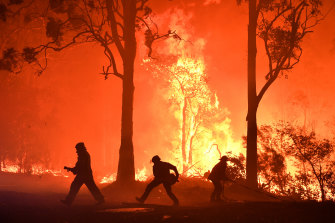In previous years I've written guides and given advice about choosing sustainable holiday gifts. You know, buy from ethical, local, Fair trade suppliers and artists. Choose pre-loved items. Give someone an experience instead of an object. Cook a meal, babysit kids, plant a tree, make organic body scrub. And wrap it all in sustainable gift wrap.
I still wholeheartedly believe in those options. And - despite what the rest of this post may suggest - I really do love the holiday season. Love it. There is nothing better than enjoying delicious food and the company of loved ones under the twinkle of fairy lights. As an added bonus, living in Sydney means that Christmas is the perfect excuse for an extended summer break at the beach. Bring. It. On.
But this year, instead of hoping santa brings me a gorgeous sustainable frock and fretting over the 'perfect' gift for my loved ones, I want something bigger. I want a revolution. I want a seismic cultural and political shift to address the growing climate crisis. It's not too much to ask, is it?
My state is literally on fire. Look at these photos. That extended summer break I mentioned before will likely be spent indoors to escape the hazardous smoke pollution which periodically blankets the city. The fires have come so early and so fiercely that fire chiefs are making public declarations about climate change and begging the government to address the climate crisis. And what does our Prime Minister do? Offers platitudes, thoughts & prayers, naively comments that volunteer firefighters don't need to be paid because they "want to be there" and uses the opportunity of our nationwide distraction to axe the federal arts department and splitting the energy and environment portfolios into other, larger, portfolios, all but ensuring climate change doesn't get a look in. Shame.
 |
| Photo: AAP via SMH |
Halfway around the world other world leaders are meeting for the annual COP climate talks. I freely admit to being particularly ambivalent about the talks this year. Which is unfair - many people work tirelessly in the lead up and throughout the talks to convince nations to make binding agreements to emissions reductions. But from my perspective (and at least one top scientist) it just looks like we've had these talks for over 20 years and global emissions are rising year on year. Countries including Australia and the United States shirk responsibility and forfeit the opportunity to become climate leaders. And remind me, how many people took an international flight (and how many business class, or private planes) to attend the talks? Not Greta, obviously, and though it doesn't make a dent in the grand scheme of greenhouse gas emissions, it does have an impact on the power of one's activism and leads to systemic change.
So needless to say, this holiday season I'm distracted. Instead of teaching my toddler about the magic of the season I'm fretting about his future. I don't want the champagne and baubles and bonbons - well, not as much as I usually do, anyway. I don't have the energy to handcraft gifts and I don't feel the same joy listening to Mariah Carey's "Merry Christmas" album as in previous years. I want global leaders to act just as that - leaders - and to take the bold actions necessary to halt the worst of the project climate disasters. We are seeing too frequent glimpses of them already, and frankly, it's terrifying.
But I hear you. You want a list. You want a guide for an ethical holiday season, so here it is:
- Change your household energy to 100% renewable energy. There are multiple affordable options available making this option more attainable than ever.
- Divest your retirement/superannuation. There are a variety of funds options that do not invest in fossil fuel companies but do have competitive returns. Make your money work for the future you want.
- Ask your workplace about their own energy and investment plans, and work with them to make the necessary changes if not enough is being done.
- Contact your politicians. Relentlessly. Let them know the climate is a top concern of yours, and if it's not theirs they will not get your vote.
- Volunteer your time.
- Donate your money. This year there are a variety of bushfire appeals including for Fire Services and wildlife rehabilitation. If any of my loved ones want to know what to get me, please do this for me.
- Connect with others. Build your community and look after those who need some extra care.
- Rest as much as you can, we have a lot of work to do in 2020.
Until then, fellow Revolutionaries,









